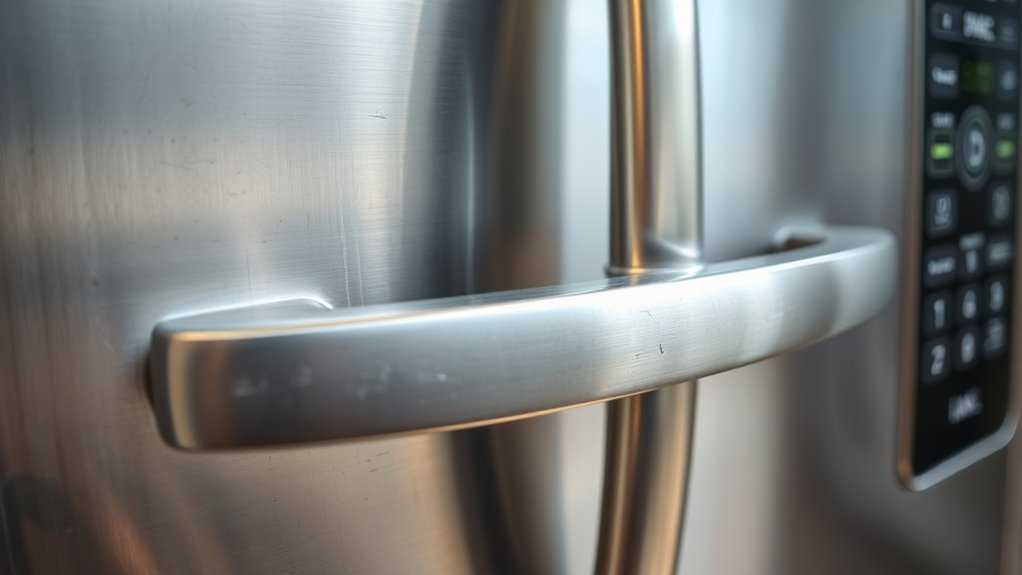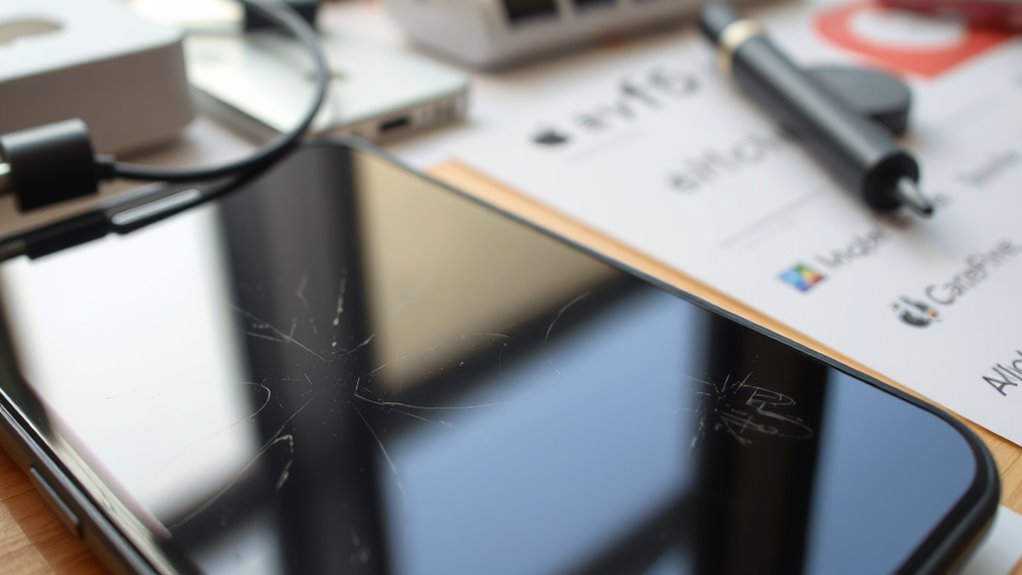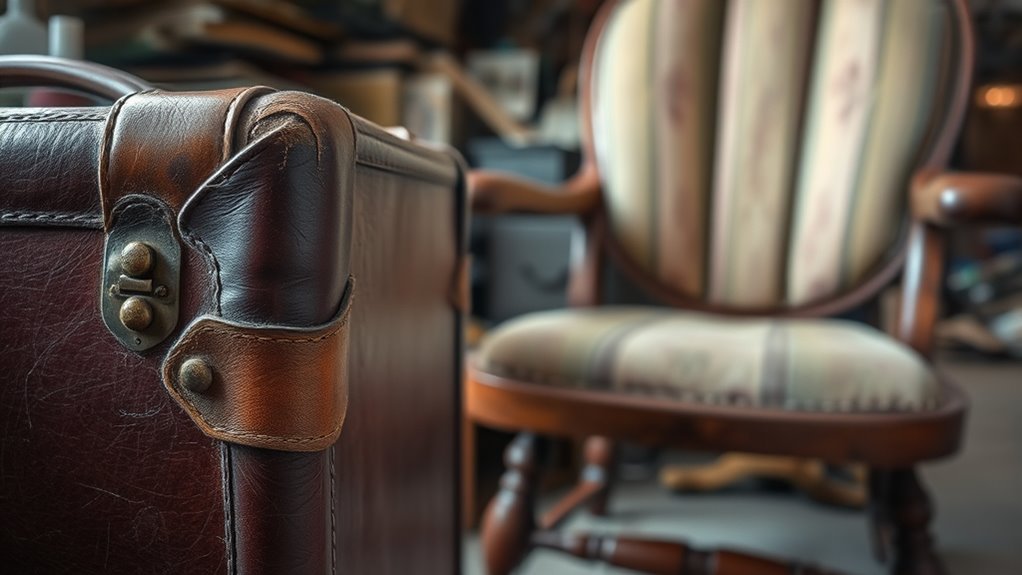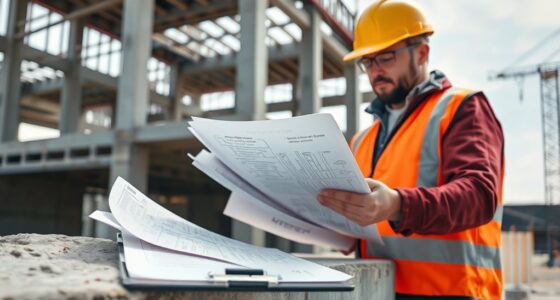Over time, your car’s most vulnerable parts include the battery (lasting 3-5 years), tires (wearing out after 25,000-50,000 miles), and brake pads (lasting around 30,000-70,000 miles). Household appliances may wear down motors, belts, or seals, while electronics lose battery capacity and performance after a few years. By understanding when these components typically fail, you can plan maintenance and replacements—continue exploring to learn more about keeping your belongings reliable.
Key Takeaways
- Automotive batteries typically last 3-5 years before needing replacement.
- Tires wear out unevenly or bald within 25,000-50,000 miles, requiring replacement.
- Brake pads generally last 30,000-70,000 miles, wearing down with use.
- Household appliances’ motors, belts, and seals degrade over several years.
- Electronic device batteries lose capacity after hundreds of charge cycles, reducing lifespan.
Common Components That Fail Over Time

As your vehicle ages, certain components are more prone to wear and eventual failure. The battery, for example, gradually loses its ability to hold a charge, typically lasting 3 to 5 years. Tires wear down unevenly or become bald, especially if alignment isn’t maintained. The brake pads also wear out over time, reducing stopping power and requiring replacement. Rubber belts and hoses deteriorate, cracking or leaking as they age. The starter motor and alternator work harder, often showing signs of failure through difficulty starting or electrical issues. Suspension parts like shocks and struts lose their cushioning ability, leading to a rough ride. Being aware of these common wear points helps you plan maintenance and avoid unexpected breakdowns. Additionally, air purifier filters need regular replacement to maintain optimal air quality and efficiency.
Typical Lifespan of Automotive Parts

Knowing how long automotive parts typically last helps you plan maintenance and avoid unexpected breakdowns. Most parts have a general lifespan, but actual wear depends on driving habits, climate, and maintenance. For example, batteries usually last 3-5 years, while brake pads wear out in 30,000 to 70,000 miles. Tires tend to last 25,000 to 50,000 miles, and timing belts often need replacement around 60,000 to 100,000 miles. Regular inspections can extend these lifespans. Here’s a quick overview:
| Part | Typical Lifespan | Replacement Interval |
|---|---|---|
| Battery | 3-5 years | Every 3-4 years |
| Brake Pads | 30,000-70,000 miles | Every 30,000-50,000 miles |
| Tires | 25,000-50,000 miles | Every 25,000-40,000 miles |
| Timing Belt | 60,000-100,000 miles | Every 60,000-100,000 miles |
| Spark Plugs | 30,000-100,000 miles | Every 30,000-50,000 miles |
Wear and Tear in Household Appliances

Household appliances naturally experience wear and tear over time, especially with regular use. Components like motors, belts, and seals gradually degrade, reducing efficiency and performance. For example, washing machine drums may become noisier or leak if seals weaken, while refrigerators can lose cooling effectiveness if compressors wear out. Small parts such as switches, timers, and filters also deteriorate, leading to malfunctions. The accumulation of dirt, moisture, and heat accelerates this process, making appliances less reliable as years go by. You might notice longer cycle times, increased energy bills, or odd noises. Regular maintenance, like cleaning filters and inspecting parts, helps slow the wear. However, eventually, most appliances will need repairs or replacement as critical components reach the end of their lifespan. Additionally, understanding vacuum cleaner attachments can help maintain your appliances more effectively and extend their longevity.
Durability of Electronics and Gadgets

Electronics and gadgets are designed to withstand daily use, but their durability varies depending on quality, usage habits, and environmental factors. High-quality devices often last longer before showing signs of wear or failure, while cheaper options may degrade faster. How you handle your gadgets matters—frequent drops, exposure to moisture, and extreme temperatures can accelerate wear. Batteries, for example, typically lose capacity after hundreds of charge cycles, reducing overall lifespan. Components like screens and ports are susceptible to scratches and damage from mishandling. Regular updates and careful maintenance can help extend their functional life, but eventually, internal parts wear out or become obsolete. Understanding these factors helps you gauge when it’s time to repair or replace your electronics, ensuring you get the most value from your investment. Durability factors also influence how long electronic devices remain functional and reliable over time.
Strategies to Extend the Longevity of Your Belongings

To maximize the lifespan of your belongings, adopting simple yet effective strategies can make a significant difference. First, follow the manufacturer’s care instructions to prevent unnecessary wear and tear. Regular cleaning removes dirt and grime that can degrade materials over time. Store items properly—use protective cases, avoid exposure to extreme temperatures, and keep belongings in dry, safe places. Rotate usage of frequently used items to distribute wear evenly. Perform routine maintenance, like tightening screws or replacing worn parts, to prevent further damage. Avoid overloading or forcing items beyond their design limits. Investing in quality storage solutions and handling items with care also extends their life. Additionally, staying informed about potential technological risks can help you take proactive measures to protect your belongings from unforeseen damages. By staying proactive and attentive, you’ll preserve your belongings longer and get more value from your investments.
Frequently Asked Questions
How Do Environmental Factors Influence the Wear and Tear of Belongings?
Environmental factors directly impact how quickly your belongings wear out. Exposure to sunlight causes fading and material deterioration, while moisture leads to rust, mold, or rotting. Extreme temperatures can weaken materials, making them brittle or warped. Pollution and dirt accelerate grime buildup, increasing cleaning needs. To extend your item’s lifespan, you should store them in controlled environments, shielded from harsh elements, and maintain proper care to minimize environmental damage.
Are There Specific Maintenance Routines to Prolong Item Lifespan?
Yes, you can extend your item’s lifespan with specific maintenance routines. Regular cleaning, proper storage, and timely repairs prevent deterioration. For electronics, keep software updated and avoid overheating. For furniture, use protective covers and polish surfaces. Follow manufacturer instructions for appliances, and check parts regularly for wear. By staying proactive with maintenance, you reduce strain on components, ensuring your belongings stay functional and in good condition longer.
Which Materials Are Most Resistant to Long-Term Degradation?
Think of materials as warriors in a battle against time. Steel and ceramics are your best allies, resisting corrosion and wear longer than plastics or wood. High-grade alloys, treated metals, and composites fight decay better, standing strong against environmental stressors. Regular maintenance like sealing, cleaning, and avoiding extreme conditions helps these champions stay victorious longer, ensuring your items last as long as possible without succumbing to the relentless march of deterioration.
How Does Usage Frequency Affect the Durability of Items?
Frequent usage shortens the lifespan of items because it accelerates wear and tear. When you use something often, it experiences more friction, stress, and potential damage, causing parts to degrade faster. To extend durability, you should rotate or limit usage, perform regular maintenance, and handle items carefully. By reducing how often you use certain items or giving them proper care, you help prevent premature breakdown and prolong their functional life.
Can Proper Storage Significantly Extend the Life of Possessions?
Proper storage can markedly extend the life of your possessions. By keeping items in a cool, dry, and dark environment, you prevent damage from moisture, sunlight, and pests. Using protective covers or containers also reduces wear and tear. Regularly cleaning and inspecting your belongings helps catch issues early. Ultimately, good storage habits preserve your items, making them last longer and saving you money over time.
Conclusion
By understanding what wears out first and when, you can outsmart time’s relentless march. Think of your belongings as a finely tuned orchestra—each part plays a vital role, but some instruments fade faster. Keep track, perform regular maintenance, and treat your possessions with care. After all, isn’t life too short to replace everything? With a little effort, you’ll enjoy your favorite things longer, turning everyday wear into a symphony of durability and delight.









